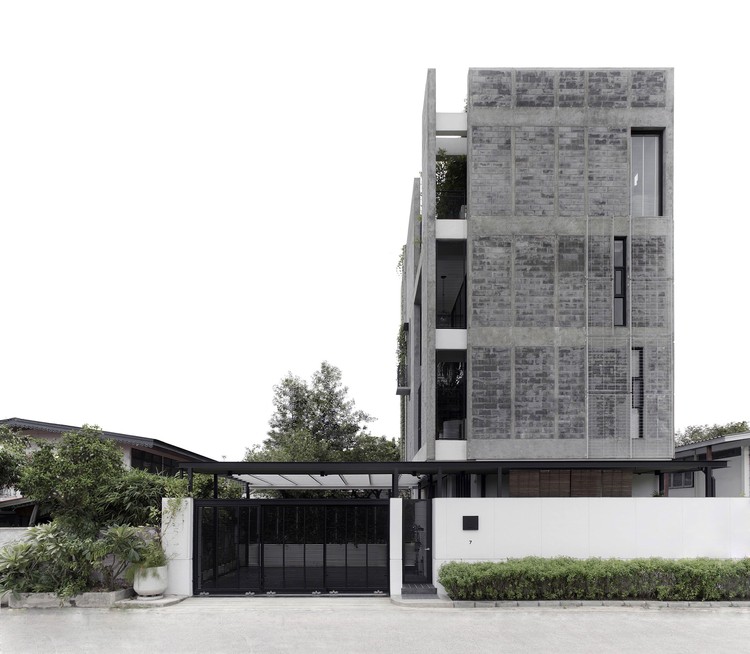
-
Architects: INchan atelier
- Area: 490 m²
- Year: 2016
-
Photographs:Peerapat Wimolrungkarat
-
Manufacturers: American Standard, TOA

Text description provided by the architects. Located in a rapidly expanding zone of Bangkok city, this mixed-use building is a mere solution to what it means by the contemporary tropical urban living. Within a 320 square-meter compound, the obsolete existing house structure was leveled and a new 4-storey building was planned to suit new multi functional purposes – an architectural design office on the lower floor, a house for a small family on the upper floors, and an art collection space on the top floor.





































